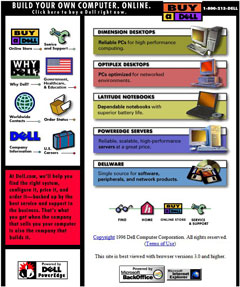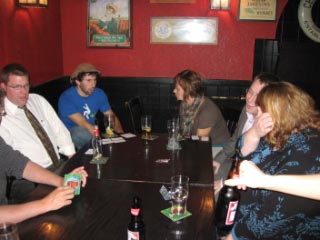As the economy worsens, I continue to think about what Thornley Fallis and 76design can do to weather the recession. And as I do this, I look at what other companies are doing to cope with tough times.
No industry has been hit harder and faster by the economic downturn than the travel and tourism industry. One company in the industry, Fairmont Hotels and Resorts, has reminded me of the ongoing importance of customer service.
Great customer service is in limited supply today

Customer service can set a company apart from competitors in an era when all competitors are only a click away. In this environment, products and many services become commodities. It’s the personal element that cannot be replicated and differentiates the great company from the pack.
Much of today’s so called customer service is really driven by time management considerations. Not the time of the client, but the time of the call centre rep or the customer service representative. In this environment, an organization that creates a work environment in which it’s customer-facing personnel can actually relate on a human level with the person in front of them will stand out from their competitors.
Fairmont Hotels is a case study of great customer service
I originally started to stay at Fairmont Hotels because of the unique physical plant and location of their Canadian properties (think grand hotels from the golden age of rail travel.) However, what drew me back time and time again was the warmth and attentiveness of the employees. They actually seemed to enjoy their work, showed pride in the company they worked for and made me feel like a valued guest. That’s not something that is common to all hotel chains.
Last week, Fairmont asked me to participate in a video interview for use in new internal staff training videos they are preparing.
 This is smart on the part of Fairmont. Not because I’m photogenic. (Brad Pitt I’m not.) It’s smart because I stay frequently at Fairmont Hotels and I have real stories to tell about my experience. And if Fairmont employees want to truly know the impact their decisions have on guests, how better to understand this than through the words and eyes of actual guests?
This is smart on the part of Fairmont. Not because I’m photogenic. (Brad Pitt I’m not.) It’s smart because I stay frequently at Fairmont Hotels and I have real stories to tell about my experience. And if Fairmont employees want to truly know the impact their decisions have on guests, how better to understand this than through the words and eyes of actual guests?
In setting up this interview, Fairmont didn’t ask me to gild the lily. Not at all, they asked me to talk about not only my positive experiences, but also the ones that weren’t so positive. To be truthful, I really couldn’t think of any negative experiences.
My experience with Fairmont employees
One time I could not get an Internet connection in my room. The hotel put me through to the telephone support (fairly standard procedure.) When that didn’t work, a technician came to my room. When that didn’t work, the desk staff assigned a new room to me, a bellman showed up at my door and I was transferred from my existing room to another (and the Internet was tested for me). Throughout this process, the Fairmont staff were patient and willingly helpful. And what makes this even more remarkable was that I later discovered the problem was with my computer, not the hotel’s Internet connection. I repeat: Throughout the troubleshooting process, the Fairmont staff were paitent and willingly helpful – even in the face of a technically challenged guest.
I’ve experienced the same caring approach when I’ve travelled with my family (a time when a good experience is even more important than when I’m travelling on my own.) My children love to go to Toronto in the summer. One year, we were assigned a rambling suite that gave us room to stretch out in a comfortable sitting area and had a round dining table large enough for a family of five. The room was perfect. When I made my reservations for the following year, I couldn’t remember the room number. However, the reservation agent searched my stay history and identified the room we like and assigned it to us for our return stay. A small extra gesture. But small things leave big impressions.
What’s the bottom line for me on why I think that Fairmont charaterizes great service? In every interaction with someone who works at the Fairmont, I feel like I’m dealing with another person who’s treating me as an individual. And I feel that I’m dealing with people who care enough to make it that way and an organization that has created a culture and organized their work in a way that supports this type of behaviour.
Great service. I don’t expect it, but I have become accustomed to receiving it from Fairmont.
How do we achieve great customer service?
Good service cannot be generated by the imposition of “cookie cutter uniformity.” Good service flows instead from consistency in the values that are shared by employees. It also comes from a culture that encourages service providers to focus on the people they are helping as individuals, not as units in a quota to be processed. If the quality of the interaction, not the quantity of transactions, is the objective then quality of service will be the outcome.
Dealing with complaints is very important as well. I believe that most problems actually go unreported. We all make a cost benefit analysis of the effort we will need to invest in order to get a response. The smart organization understands that The unsuccessful handling of a complaint makes me question whether I want to repeat my experience again. A complaint acknowledged and dealt with will outweigh the memory of the original complaint. I will return to an organization that has acknowledged my complaint and responded.
As businesses of all kinds think about how to cope with the coming recession, it’s well worth looking at a company like Fairmont as a model. I bet they make it through the recession with relatively less damage than their competitors. I’d like to do the same for my business.












